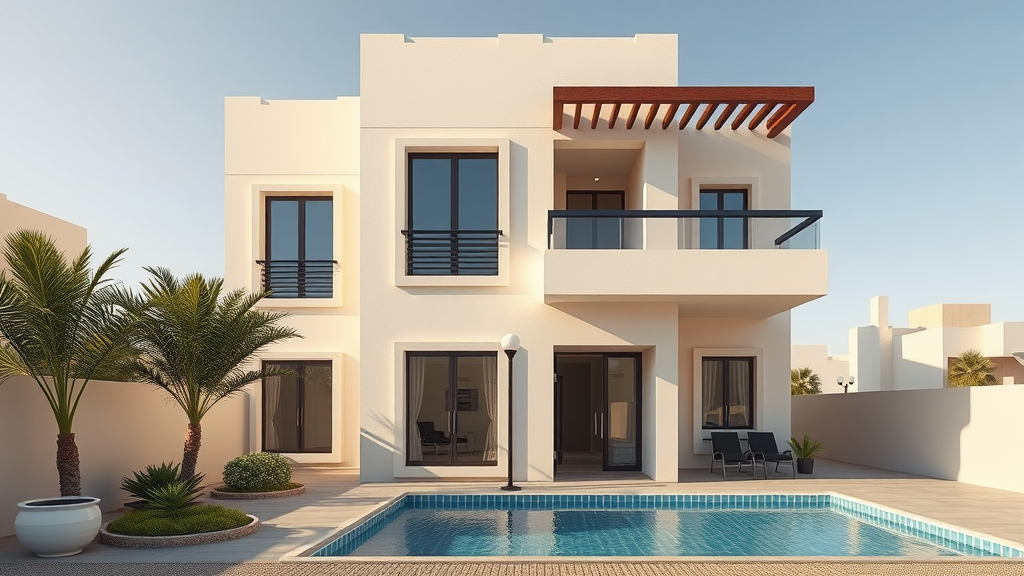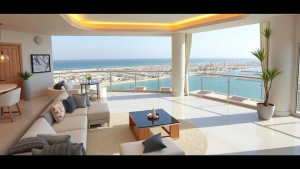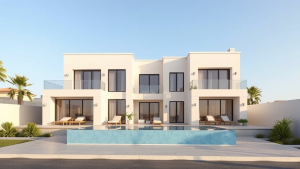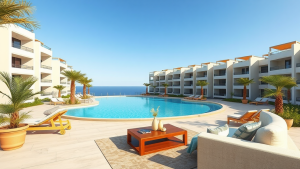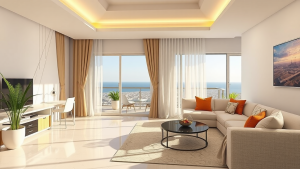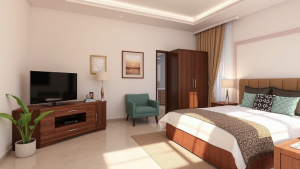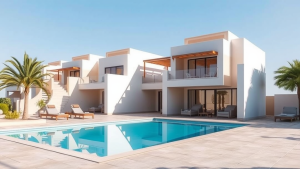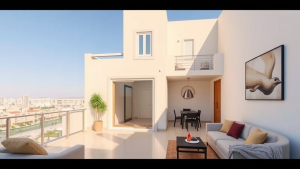Comparing access to nature: the appeal of Hurghada’s beaches vs. limited green spaces in cities like amsterdam
When considering access to nature, it’s fascinating to compare two vastly different environments: Hurghada’s stunning beaches and the limited green spaces found in cities like Amsterdam. Both locations offer unique appeal, yet they illustrate how geography and urban planning impact access to natural beauty.
Hurghada, a resort town along the Red Sea in Egypt, shines with its spectacular beaches. The coastline stretches for miles, inviting residents and tourists alike to bathe in the sun, swim in the clear waters, and enjoy activities like snorkeling and diving. This close proximity to the ocean plays a significant role in enhancing the quality of life for its visitors. The sound of waves, the feel of the warm sand, and the picturesque sunset create a relaxed atmosphere that many seek in their daily lives.
Living in Hurghada means having direct access to some of nature’s most breathtaking landscapes. Here, you can stroll along the beach, breathe in the salty air, and connect with the natural world without the hustle and bustle of city life. It’s not uncommon to see locals spending their evenings with family on the beach, a sight that fosters community and relaxation. The vibrant marine life also offers a draw, as many find joy in exploring coral reefs just a short swim away. Whether you’re an adventure seeker or someone seeking serenity, the access to nature in Hurghada caters to all preferences.
In contrast, Amsterdam presents a different challenge when it comes to accessing nature. While the city is known for its historic canals and picturesque architecture, the green spaces are relatively limited. Public parks such as Vondelpark and Amsterdamse Bos provide residents with pockets of greenery. However, these areas can become crowded, and the experience may not compare to the openness of beach environments.
Nevertheless, Amsterdam has taken steps to incorporate nature within its urban fabric. Initiatives like green roofs and community gardens are becoming increasingly popular. Locals can engage with nature through these innovative concepts, but they often lack the expansive feel of a beach destination. Here are some pros and cons of accessing nature in both locations:
- Hurghada’s Beaches:
- Stunning ocean views and natural beauty.
- Variety of water-based activities like snorkeling and diving.
- Relaxed beach culture that promotes social interaction.
- Amsterdam’s Limited Green Spaces:
- Accessible parks, though often crowded.
- Innovative urban green projects such as rooftop gardens.
- Connecting with nature may feel restricted due to space limitations.
For residents and tourists alike, the uncomplicated access to nature in Hurghada offers a sanctuary that rejuvenates the spirit. The beaches of the Red Sea invite exploration and relaxation, while the social culture surrounding them fosters a sense of community. In cities like Amsterdam, while innovative solutions exist, the experience of nature can feel interspersed with urban development, limiting the immersive benefits nature has to offer.
Additionally, the difference in climate plays a significant role in how people engage with nature. Hurghada boasts warm weather year-round, making beach visits a regular activity, while Amsterdam’s cooler, rainy climate can deter outdoor activities outside of summer. This disparity influences not only residents’ experiences but also their mental health and overall well-being. Access to the sun, sand, and sea has a profound effect on mood and lifestyle, contributing to what many see as a more laid-back way of living.
Ultimately, when comparing access to nature in Hurghada versus Amsterdam, it becomes evident that each location has its unique charm. While Hurghada’s beaches provide an idyllic escape into nature, Amsterdam’s green projects offer a glimpse into how urban environments can adapt to include elements of the natural world. Understanding how these differences affect people’s lives is essential for appreciating how we can all make the most of our unique ecological surroundings.
Whether you’re dreaming of sunbathing on a pristine beach or enjoying a leisurely stroll through a vibrant park, access to nature significantly shapes our experiences. Each destination teaches us something valuable about the importance of connecting with the natural environment, wherever we find ourselves.
The importance of natural spaces for urban well-being and community life
Natural spaces play a crucial role in enhancing urban well-being and enriching community life. With cities becoming more crowded and urbanized, the need for green spaces is increasingly recognized for its profound impact on mental, physical, and social health.
Access to natural environments can significantly boost the quality of life for residents. When you walk through parks or along tree-lined streets, the exposure to greenery is not only visually appealing but also beneficial for your mental state. Studies have shown that spending time in nature reduces stress and promotes relaxation. The sights, sounds, and smells of nature can create a calming effect, helping to alleviate anxiety and improve mood. This is especially important in urban settings, where noise and hustle can contribute to elevated stress levels.
In addition to mental health benefits, natural spaces encourage physical activity. Parks and outdoor areas provide opportunities for walking, jogging, cycling, and playing sports. Engaging in physical activity outdoors not only supports fitness but also fosters a sense of community. When you participate in activities with neighbors or friends in your local park, you build connections that strengthen community ties. This social interaction is essential for a vibrant urban life.
Natural spaces also contribute to biodiversity and environmental sustainability within cities. Urban greenery serves as a habitat for various species, helping to maintain ecological balance. By incorporating more plants and trees into cities, you can improve air quality and reduce the urban heat island effect. Elevated temperatures in cities can be mitigated by the presence of parks and green roofs, which helps create a more pleasant living environment. In addition, biodiversity enhances the resilience of urban areas to climate change, making them adaptable to future challenges.
Here are a few reasons why natural spaces are vital for urban well-being and community life:
- Mental Health Improvement: Exposure to nature lowers stress levels and enhances emotional well-being.
- Encouragement of Physical Activity: Green spaces provide venues for exercise and movement, leading to healthier lifestyles.
- Social Interaction: Parks serve as gathering places where neighbors can meet, fostering a sense of belonging.
- Environmental Benefits: Increased greenery improves air quality and supports urban wildlife.
- Cultural Spaces: Parks and gardens can host art installations, events, and community gatherings, enriching local culture.
Moreover, engaging with nature can be a source of inspiration. Many residents find that spending time outdoors sparks creativity and fosters innovation. Whether you are contemplating a personal project or brainstorming solutions to community issues, nature often serves as a backdrop for productive thought.
Another aspect of the importance of natural spaces is their role in promoting social equity. Well-maintained parks and green spaces should be accessible to all community members, regardless of socioeconomic status. When urban planners prioritize equitable access to nature, they not only improve the quality of life for all residents but also address disparities that often exist within cities. Everyone deserves access to outdoor recreational areas and the mental and physical health benefits they provide.
In cities where green spaces are limited, analyzing the distribution and quality of these areas can shed light on community needs. Urban development strategies should emphasize the incorporation of more parks, gardens, and natural landscapes into city planning. This can be achieved by repurposing vacant lots, enhancing underutilized spaces, and encouraging community gardening initiatives. When communities have a say in creating their green spaces, it leads to a stronger connection between residents and their environment.
By prioritizing natural spaces in urban areas, we enhance the livability of cities, promote healthier lifestyles, and create a more connected community. As urban populations continue to grow, the emphasis on incorporating and protecting these natural environments becomes increasingly vital. This balance between urban development and preserving nature will result in thriving communities that support well-being and foster a genuine sense of belonging.
Access to nature plays a critical role in enhancing our urban experiences and overall well-being. The stunning beaches of Hurghada, with their soft sands and inviting waters, provide a natural escape, fostering relaxation and recreation. These coastal havens not only attract tourists but also serve as vital social hubs for the local community. The warm climate and picturesque scenery create an environment where people can connect with nature and with one another.
Conversely, cities like Amsterdam, while renowned for their culture and history, face challenges concerning limited green spaces. Despite the city’s efforts to incorporate parks and recreational areas, the reality remains that urban development often takes precedence. This scarcity can affect community well-being, as nature is crucial for alleviating stress, promoting physical activity, and nurturing social ties.
Ultimately, comparing access to nature in Hurghada and Amsterdam underscores the significance of outdoor spaces in fostering a healthy urban lifestyle. Natural environments offer more than just aesthetic appeal; they enrich our lives, contributing to mental and physical health. Finding balance is key. Cities must prioritize green spaces, even amid modern demands, to support community well-being and create inviting environments where residents can thrive. Emphasizing the importance of accessible nature, whether through beaches or parks, can lead to improved quality of life in urban settings. Each place has its charm, yet it is clear that easy access to nature is essential for thriving communities.

